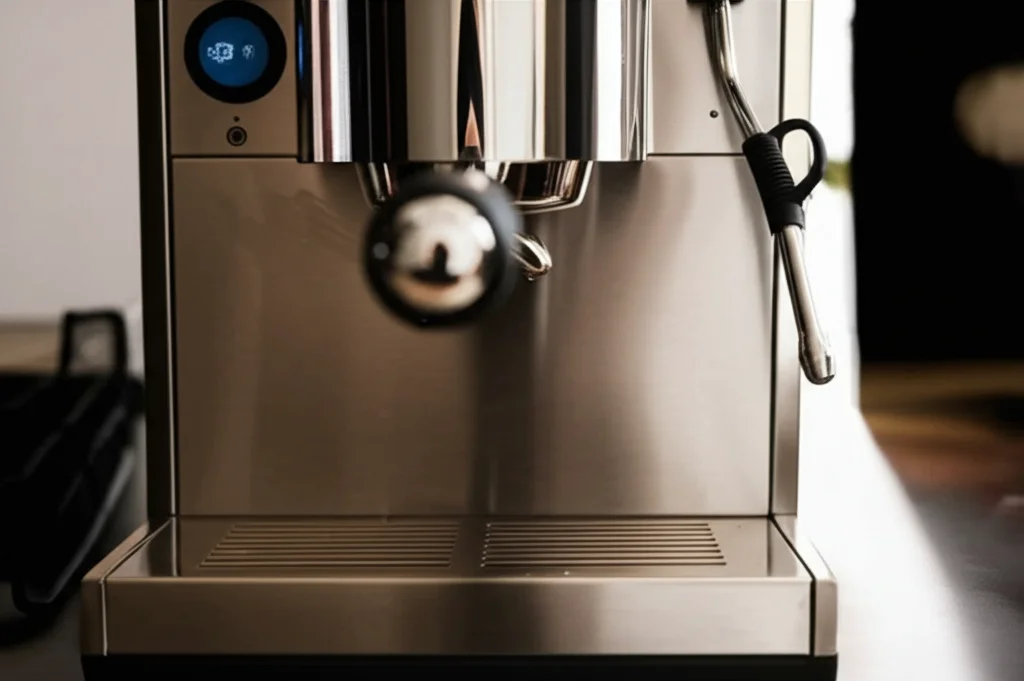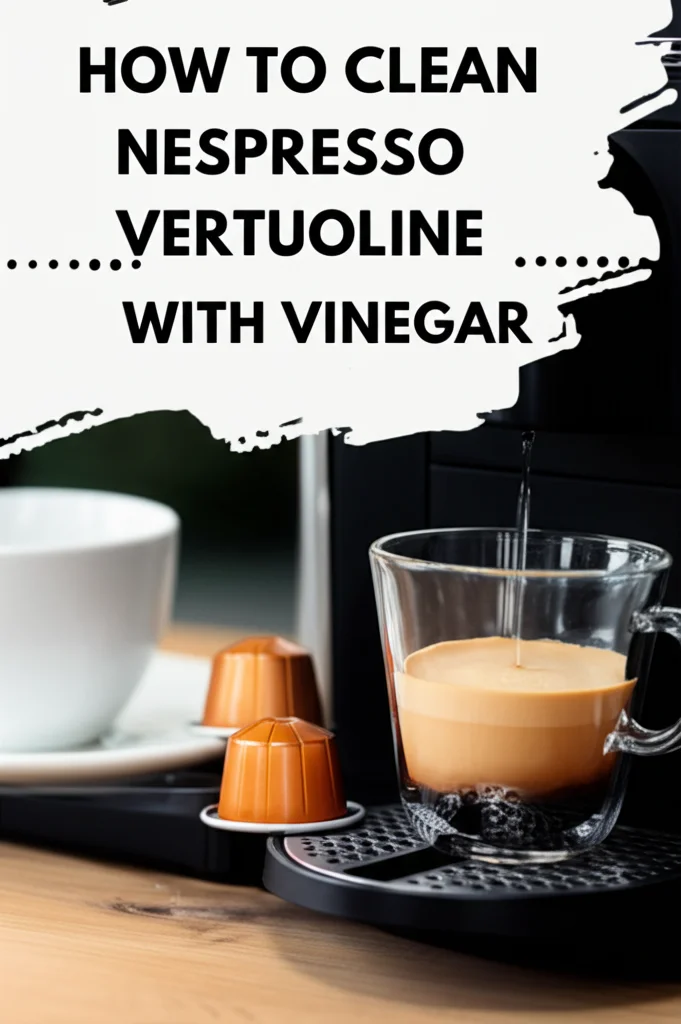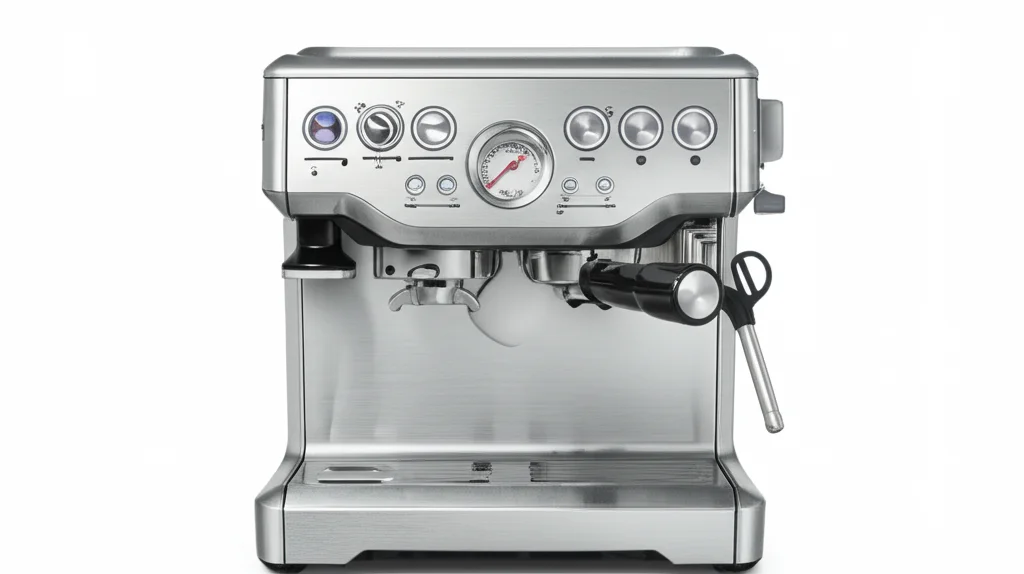· Kitchen Appliances · 6 min read
How To Clean The Nespresso Water Tank

Keeping Your Brew Fresh: How To Clean Your Nespresso Water Tank
Ever wonder if your Nespresso machine is working at its best? A clean machine means a better cup of coffee, and it all starts with the water tank. The Nespresso water tank is often overlooked, but it’s a breeding ground for limescale and bacteria that can affect the taste of your coffee and even damage your machine. This article will guide you through everything you need to know about cleaning your Nespresso water tank, ensuring your daily brew is always delicious. We’ll cover everything from routine cleaning to tackling stubborn limescale buildup, keeping your Nespresso machine in top condition.
Quick Answer: To clean your Nespresso water tank, remove it from the machine, wash it with mild dish soap and warm water, rinse thoroughly, and allow it to air dry completely before reattaching. For limescale, use a descaling solution or a vinegar and water mixture.
Takeaway:
- Regular cleaning prevents limescale buildup.
- Use mild soap and water for routine cleaning.
- Descale the tank periodically for optimal performance.
- Always rinse thoroughly and allow to dry completely.
Why Cleaning Your Nespresso Water Tank Matters
Let’s face it, nobody wants to drink coffee that tastes stale or off. A dirty water tank can significantly impact the flavor of your coffee, introducing unwanted tastes and odors. Limescale, a common byproduct of hard water, builds up inside the tank, restricting water flow and reducing the machine’s efficiency. This buildup can also lead to overheating and potential damage to your Nespresso machine, shortening its lifespan. Regular cleaning isn’t just about taste; it’s about protecting your investment.
How Often Should You Clean the Nespresso Water Tank?
Consistency is key when it comes to maintaining your Nespresso machine. For optimal performance, you should aim to clean the water tank with soap and water every two weeks. This simple step prevents the buildup of residue and keeps things fresh. However, descaling – removing limescale – should be done more frequently, especially if you live in an area with hard water. Generally, descaling every 1-3 months is recommended, but pay attention to your machine’s descaling indicator light; it will tell you when it’s time.
What You’ll Need to Clean Your Nespresso Water Tank
Before you begin, gather your supplies. You won’t need anything fancy! Here’s a list of what you’ll need:
- Mild dish soap
- Warm water
- Soft sponge or cloth
- White vinegar (optional, for descaling)
- Nespresso descaling solution (optional, for descaling)
- Clean, dry towel
- Bottle brush (helpful for reaching tight spots)
Having everything ready beforehand will make the cleaning process much smoother and more efficient.
Step-by-Step Guide: Cleaning with Soap and Water
This is your routine cleaning method, perfect for keeping the tank fresh between descaling sessions. It’s quick, easy, and effective at removing everyday residue.
- Remove the Tank: Carefully remove the water tank from your Nespresso machine. Ensure the machine is unplugged before handling any parts.
- Empty the Tank: Pour out any remaining water from the tank.
- Wash with Soap: Fill the tank with warm water and add a small amount of mild dish soap. Use a soft sponge or cloth to gently scrub the inside of the tank, paying attention to the bottom and corners. A bottle brush can be helpful for reaching difficult areas.
- Rinse Thoroughly: Rinse the tank several times with clean, warm water until all traces of soap are gone. Residual soap can affect the taste of your coffee.
- Air Dry: Allow the tank to air dry completely before reattaching it to the machine. This prevents mold and bacteria growth. You can place it upside down on a clean towel to speed up the drying process.
Tackling Limescale: Descaling Your Nespresso Water Tank
Limescale is the enemy of a good coffee machine. It’s a hard, chalky deposit that builds up over time, hindering performance and affecting taste. Here’s how to tackle it:
Using White Vinegar
White vinegar is a natural and effective descaling agent.
- Prepare the Solution: Mix equal parts white vinegar and water.
- Fill the Tank: Fill the Nespresso water tank with the vinegar solution.
- Run a Brewing Cycle: Place the tank back into the machine and run a full brewing cycle without a coffee pod. Repeat this process several times.
- Rinse Thoroughly: Empty the tank and rinse it thoroughly with clean water, running several more brewing cycles with just water to remove any remaining vinegar taste.
Using Nespresso Descaling Solution
Nespresso offers a dedicated descaling solution specifically formulated for their machines.
- Follow Instructions: Carefully follow the instructions on the Nespresso descaling solution packaging. Typically, you’ll mix the solution with water and run it through the machine in a similar way to the vinegar method.
- Rinse Thoroughly: After descaling, rinse the tank and machine thoroughly with clean water, running several brewing cycles with just water.
Preventing Limescale Buildup: Tips and Tricks
Prevention is always better than cure! Here are a few tips to minimize limescale buildup in your Nespresso water tank:
- Use Filtered Water: Using filtered water significantly reduces the mineral content, lessening the amount of limescale that forms.
- Regular Descaling: Stick to a regular descaling schedule, even if you use filtered water.
- Empty the Tank Daily: Don’t leave water sitting in the tank overnight. Empty it after each use.
- Consider Water Hardness: If you live in an area with very hard water, you may need to descale more frequently.
Frequently Asked Questions (FAQs)
Q: Can I put the Nespresso water tank in the dishwasher?
A: While some Nespresso water tanks may be dishwasher safe, it’s generally not recommended. The high heat and harsh detergents can potentially damage the plastic. Hand washing is always the safest option.
Q: What if my Nespresso machine has a descaling alert?
A: The descaling alert indicates that limescale has built up to a level that could affect performance. Follow the descaling instructions in your Nespresso machine’s manual immediately.
Q: Can I use lemon juice instead of vinegar to descale?
A: Lemon juice can be used as a descaling agent, but it’s not as effective as vinegar or a dedicated descaling solution. It may also leave a lingering citrus scent.
Q: How do I know if my Nespresso water tank is clean enough?
A: A clean tank should be free of visible residue and have no lingering odors. If you’ve descaled, the water should taste fresh and clean after rinsing.
Conclusion: A Clean Tank, A Perfect Cup
Cleaning your Nespresso water tank is a simple yet crucial step in maintaining your machine and enjoying consistently delicious coffee. By following these steps – regular soap and water cleaning, periodic descaling, and preventative measures – you can ensure your Nespresso machine stays in top condition for years to come. Don’t let limescale ruin your coffee experience! Take a few minutes each week to care for your water tank, and you’ll be rewarded with a perfect brew every time. Now, go enjoy that cup of coffee – you’ve earned it!




